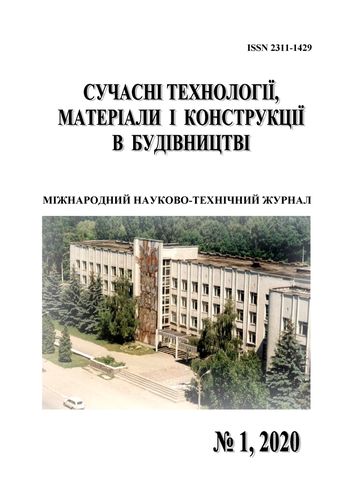STRENGTH OF CLT PANELS AT TENSION AND COMPRESSION ALONG GRAIN DIRECTION
DOI:
https://doi.org/10.31649/2311-1429-2020-1-5-10Keywords:
tensile strength along the grain, compression along the grain, cross laminated timber, CLT, effective cross-sectional area, combined strength classesAbstract
The bending strength of the plane and the tensile strength along the grain depend on the characteristic tensile strength of the boards along the grain, their coefficient of variation and the number of boards as a system, or the effective cross section of the CLT panel loaded along the grain direction. To date, studies have been performed to assess the tensile strength along the grain of the CLT panels, but there are no coefficients that take into account the possible load distribution similar to the bending strength from the plane of the panel. Neglecting the layers of crossboards when determining the net cross-sectional area Anet emphasizes the rationality of the introduction of a heterogeneous panel structure based on the strength class of boards, similar to combined plywood for beams, where high-strength boards are located in the upper and lower quarter or third of the cross section. The methodology showed in this paper for calculating the strength of inhomogeneous CLT panels shows its efficiency, which leads to optimization and material savings. The orthogonal structure of glued boards in the CLT panel when compressed perpendicular to the grain leads to strength and modulus of elasticity higher by 30% than for glued laminated timber, as indicated in the publication Brandner and Schickhofer (2014) [1], which also considers the stress dispersion model, previously developed by van der Put (1991, 2008, 2012) [4-6] according to which the stress dispersion along the fibers is 45 ° and 15 ° perpendicular to the grain. Studies of CLT panel samples have shown that the presence of gaps and compensatory cuts between the boards reduce the dispersion parameter by almost 2 times. With standard board thicknesses and the presence of cracks, the stress dispersion during compression perpendicular the panel plane is on average 35 °.
References
Brandner R. and Schickhofer G., “SSTC 1.1.2-5 clt_panel_pressdruck: Untersuchungen betreffend der Definition eines für die Produktion von Brettsperrholz optimalen Pressdruckes”, 2012, Research Report, Institute of Timber Engineering and Wood Technology, Graz University of Technology, Competence Centre holz.bau forschungs gmbh, p. 76.
EN 16351:2015, “Timber structures – Cross laminated timber – Requirements” European Committee for Standardization CEN, Bruxelles, Belgium.
prEN 16351:2018, Timber structures — Cross laminated timber — Requirements, WD 2018-03-16.
Van der Put, T.A.C.M. (1991) Discussion of the failure criterion for combined bending and compression, CIB-W18/24-6-1, Oxford, United Kingdom.
Van der Put, T.A.C.M. (2008) Derivation of the bearing strength perpendicular to the grain of locally loaded timber blocks, Holz als Roh- und Werkstoff, 66:409-417, DOI 10.1007/s00107-008-0258-0.
Van der Put, T.A.C.M. (2012) Restoration of exact design for partial compression perpendicular to the grain, Wood Material Science and Engineering, DOI 10.1080/17480272.2012.681703.
Downloads
-
PDF (Українська)
Downloads: 206



